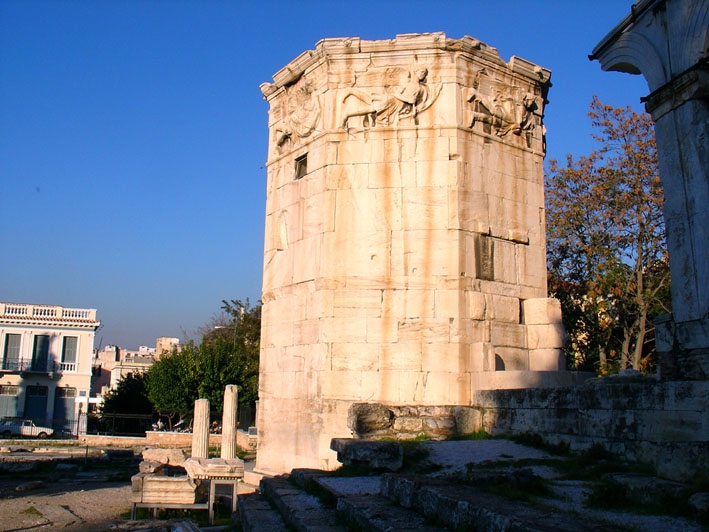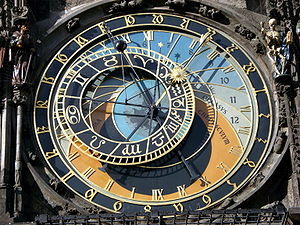 If you've ever been to Athens, you're probably familiar with the Tower of the Winds, an octagonal marble tower in the Roman marketplace at the foot of the Acropolis. What's less well-known is that it held one of the largest and most elaborate water clocks of Greek and Roman civilisation.
If you've ever been to Athens, you're probably familiar with the Tower of the Winds, an octagonal marble tower in the Roman marketplace at the foot of the Acropolis. What's less well-known is that it held one of the largest and most elaborate water clocks of Greek and Roman civilisation.
The tower is one of the only buildings from ancient Greece or Rome that has never been buried or demolished, or even lost its roof. It was built at the beginning of the first century BC by a Macedonian astronomer called Andronicus of Cyrrhus. Carved on its faces are eight winged demigods, representing each of the eight winds, with a sundial beneath each one.
The inside, by contrast, has been completely gutted and the only sign of its original function is a mysterious pattern of holes and grooves carved into the floor and walls. In Roman texts, the tower was referred to as an horologium, which means "hour indicator". And the ancient name of the spring that runs above the tower in the hill of the Acropolis is Clepsydra, which means "water thief" and was a name often used for water clocks.
This much is fairly easy to find out. But what did this water clock look like? For nearly a century after the tower was first described by archaeologists in 1870 scholars didn't even attempt to answer this question because its mechanism had completely disappeared. Even today, descriptions of the tower tend to give only the shadiest of details about the clock itself. While I was researching Decoding the Heavens, however, I managed to unearth a couple of papers from the 1960s, in which a British science historian called Derek de Solla Price - better known for his work on the Antikythera mechanism - reconstructed it. The papers were published in the American Journal of Archaeology in 1966, and in the April 1967 issue of National Geographic (neither are online I'm afraid).
Price reckoned that deciphering what the floor markings once supported was like "recreating the workings of a suburban kitchen in an empty room, using the relative positions of the sockets, pipe holes and rectangular floor stains as evidence". So he drew a plan of the holes and grooves in the tower, then compared them to the water clock designs described in ancient texts. He found a match.
Water from a nearby stream poured into container that was engineered to keep a constant water level - either by overflow pipe near the top or a ballfloat that blocked the inflow pipe when the tank was full. Water then dripped from hole in the bottom of this container at a constant rate into a cylindrical vessel beneath. The rise in this water level over the day was used to measure the passing hours, and it was emptied and started again with each new dawn.
This type of clock was designed by the Greek engineer Ctesibius in the third century BC, and used throughout the Greek and Roman worlds. But the scale of the Tower of the Winds suggests that this one was huge.

A float in the measuring tank would have turned an axle as it rose, and this in turn was connected to a large bronze disc, marked with the constellations in the sky, which rotated behind a set of curved wires that represented the position of the horizon and the hours of the day - it might have looked a little like the Prague astronomical clock (pictured), although driven by water and not clockwork. From the front, an observer would see the Sun and stars riding clockwise through the sky as time passed, mirroring the movements of the heavens. Price also found channels in the floor where the overflow from the water tank fed three fountains, and grooves that held marble railings to keep spectators away from the clock's machinery. Knowing the Romans, the clock was probably also surrounded by elegant statues.
The gleaming bronze star disc turning inexorably and mysteriously in line with the sky must have been the main attraction of the bustling Athens marketplace. This was much more than just a timepiece. It was a spectacular celebration of the beauty of the heavens, and of man's understanding of it.